Croatian Healthcare Workers: Christmas's Forgotten Heroes?
December 28, 2020 – Amidst the difficulties of a second lockdown, a socially distanced Christmas and yet more earthquakes, have we forgotten about Croatian healthcare workers? TCN decided to interview a doctor working on the front line of the fight against COVID
During the first lockdown, it was all about the balconies. Saxophonists, DJs, opera singers – we were entertained on social media by a string of balcony-based stunts that somehow showed resilience, community spirit, humour. Zagreb was no exception. A trend of clapping on balconies in appreciation of healthcare workers passed from country to country and was picked up in Zagreb. After the applause finished, people went back inside. Nothing much had changed. It was a nice enough gesture.
Since the start of summer, no such applause has been heard. Perhaps the release from lockdown gave the signal that the lives of Croatian healthcare workers had also become much easier? That certainly wasn't the case. Though the number of people infected with COVID has grown significantly over recent weeks, Croatian healthcare workers have been treating people sick with COVID since springtime.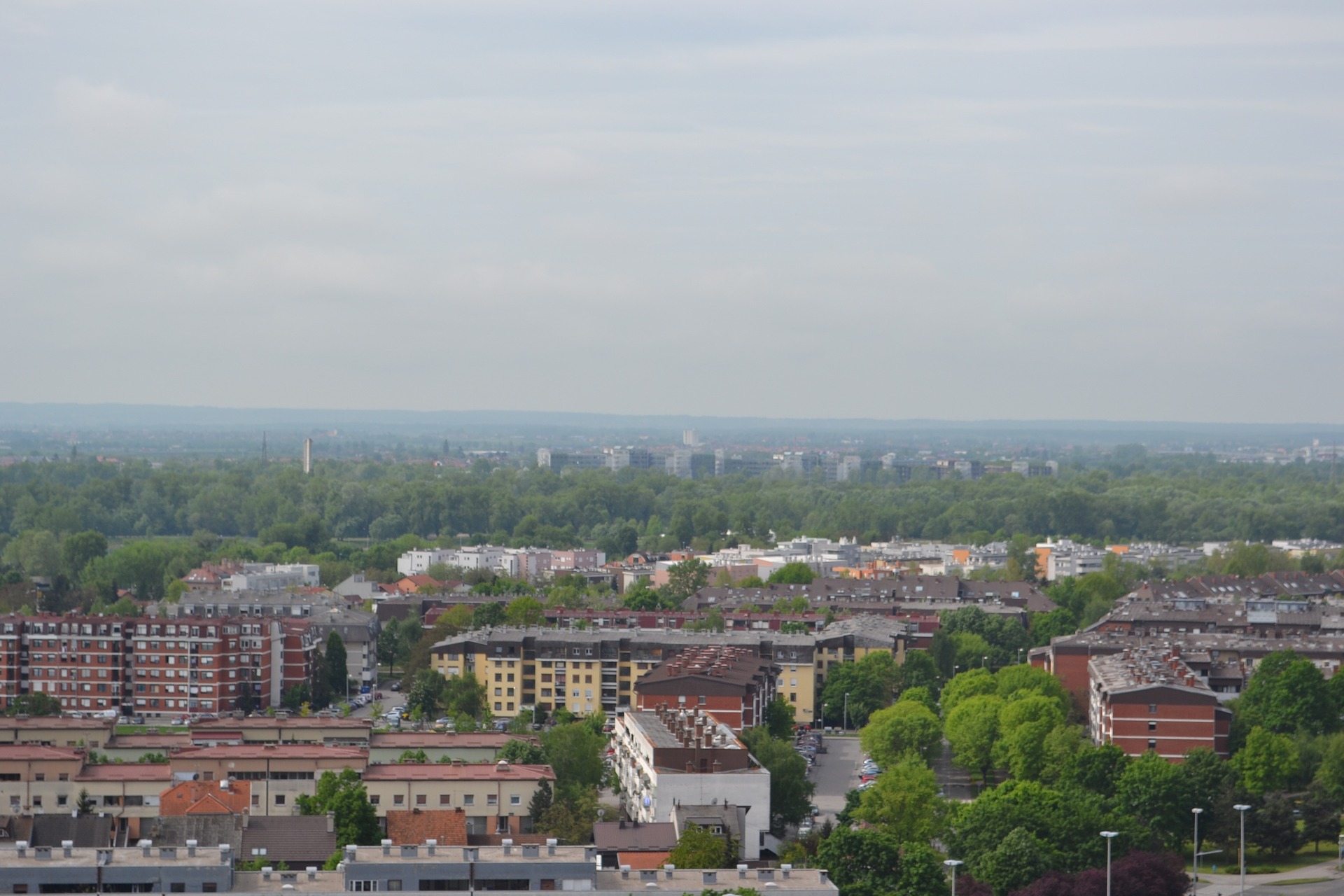
Croatian healthcare workers are currently busier with COVID patients than at any time before. And yet, there are no more trips out onto the balconies to show our appreciation for them. Perhaps it's now too cold outside? Perhaps some aren't aware how busy Croatian healthcare workers currently are with COVID patients? Are we perhaps guilty of taking Croatian healthcare workers for granted? Or, maybe we have simply put Croatian healthcare workers to the back of our minds as we struggle with our own challenges?
Throughout this year, TCN has been pleased to report many instances of generosity and innovation directed towards the fight against COVID. Certainly, not everyone in the country is guilty of forgetting about the Croatian healthcare workers who are on the front line fighting this disease. But, how much impact do these instances have on the general lives of Croatian healthcare workers? What is it like to no longer hear the nightly appreciation from our balconies? And, just what is life like as one of the many Croatian healthcare workers battling COVID in the year of the pandemic? TCN decided to interview one to find out.
The doctor we spoke with is a resident physician, working at a smaller community hospital in the continental part of Croatia. They agreed to speak with us on the condition that they do so anonymously.
Looking back at the first lockdown, we didn't know so much about COVID back then. We didn't know exactly how it was spread, the different manifestations of the disease, what course the disease took, nor what the recovery could be like. I think the government did a really good job of responding to the threat as they saw it. We had a small spike in cases, but that is minuscule to what we have now.
I think people generally did what they were told because they thought it would be temporary and they could see the sense in starving the disease out.
At the hospital, we were at first caught a little off guard with the amount of PPE we had and some other resources that we needed. For ICU and ventilators, we were well equipped.
Some of the residents were given some paid leave. It was important to put human resources into tiers. Croatian healthcare workers were certainly more predisposed to catching the disease, simply because they were around it every day.
After such great early successes, I was surprised that everything was relaxed later on to allow the tourist season to take place how it did, and for events like the Vukovar commemoration. It felt like it was a calculated risk. The lockdown we are now in is perhaps too little, too late. The disease is out there now, wild. The numbers of infected people are significantly higher.
The difficulty with this disease is that people can be infected and have very few or no symptoms at all. They might not know they are spreading the virus. You might not know you're sitting next to someone who has it.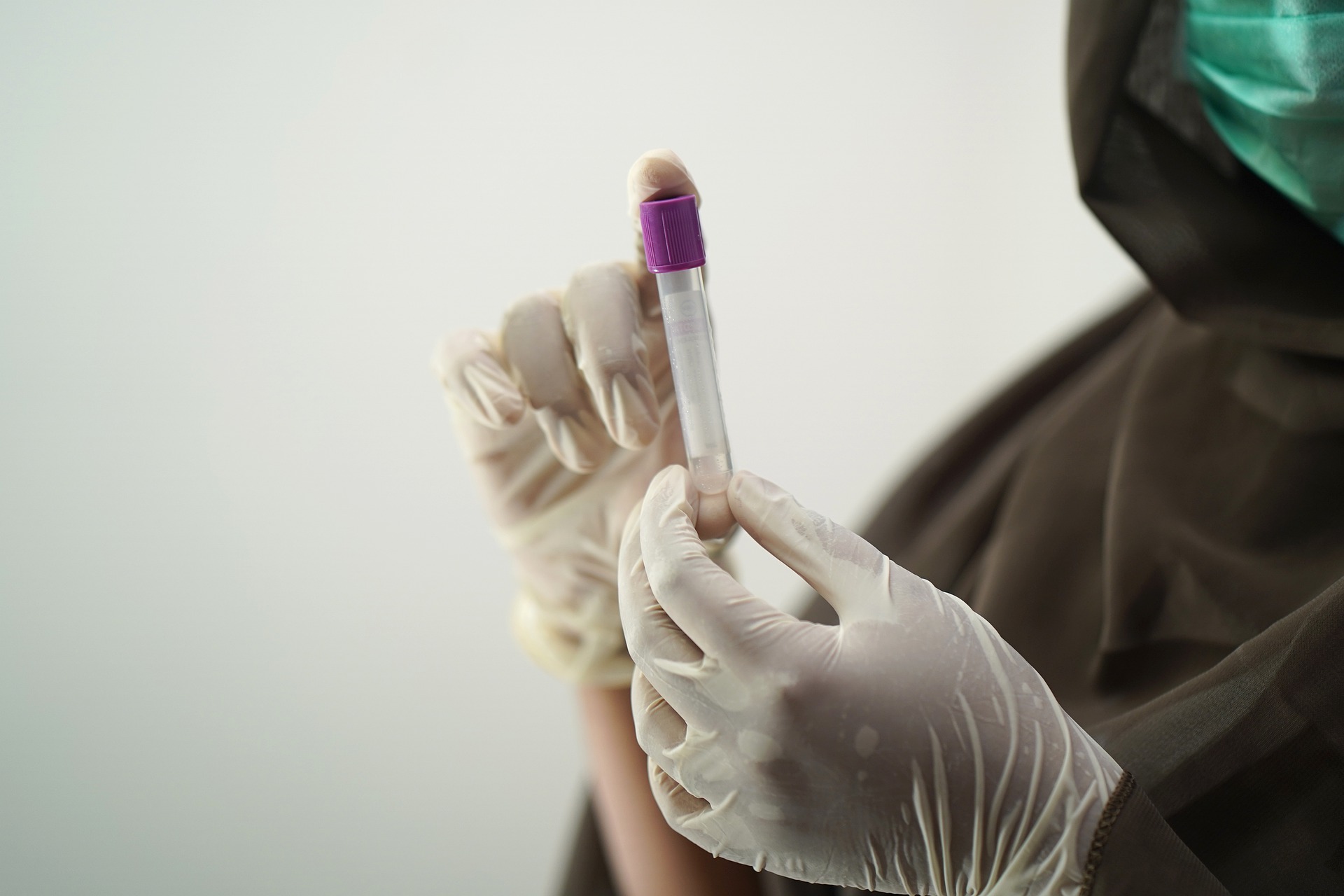
Even though we're not at the centre of care for a major population area or city, we saw cases of the disease almost immediately. Our community hospital services an area containing around 150, 000 people. The first cases in April came from nursing homes – elderly, vulnerable people, many with pre-existing conditions. We were well equipped to handle it. Now, we are stretched on a daily basis. We fill the beds with sick people as soon as we empty them.
We wear masks and PPE all day, all the time. All Croatian healthcare workers in hospitals currently do this. Every patient who comes in, regardless of their symptoms, we treat them as though they are carrying the disease.
A lot of residents like me, who are working towards getting their specialty, go to do some periods of work in larger hospitals in the bigger cities. Now, many of those residents have been called back to their community hospitals – we are short on human resources.
The hospital has had to restructure itself significantly. Lots of doctors have been asked to provide cover in the emergency department. Over half of that area is now fully dedicated to COVID.
What do COVID patients look like in regards to their symptoms? It depends on their age and risk group, but you see people who look like they have flu or bacterial pneumonia, you see people who are in acute respiratory distress. Sometimes they have neurological changes, some of them look like they have had a stroke. Some people who have been infected and have supposedly got over the worst of the symptoms, come back in after a month or two with blood clotting problems – blood clots in the legs, which have a tendency to travel up to the lungs and cause a pulmonary embolism. That's a pretty big medical emergency. Some who have pre-existing heart conditions come in with a heart attack triggered by them catching COVID – it's more complicated trying to revive someone when you know they have COVID. The presentation of the disease is so variable.
It's not only older people. I've seen young people be admitted with serious reactions to COVID - young, healthy people who have no pre-existing conditions. I've seen young people come in with mild symptoms, they are sent home with antibiotics and steroids. That is the standard treatment – antibiotics to prevent a bacterial super-infection and steroids to prevent an acute reaction by the body's immune system to COVID. - that's what can cause big problems later on, in the course of the illness. But, sometimes that's not enough. I had a young patient just last week - super healthy, worked out regularly, no pre-existing conditions – and his lungs just looked awful. He had to go to the ICU immediately (sadly, this patient later died). That's like no disease I've ever seen before. Really, COVID is a completely new kind of animal.
The new strain of COVID? There is evidence that it can be spread more easily, and that it can affect more younger people, but there is no evidence that it is any more severe. The vaccines will work against it.
We're short on ventilators now. Really, we need two free ventilators at any time, in case there is an emergency admission. We are not currently in the position where we always have two free ventilators – sometimes they are all in use. That's a worry. I worked one shift where the anaesthesiologist said “We just don't have any more space for them – we will just have to put them in the hallway”. I've never seen that before.
I've heard of Croatian healthcare workers, colleagues in other hospitals getting sick with COVID and the hospital asks them to prove they got sick at work. It's pretty clear that's the most likely place they would have got sick because they're working with COVID patients. They were forced to be off work, but only on a lower level of sick pay. If you get ill because of being at work, you get full pay. But, they couldn't prove it, so they didn't get that.
I've been lucky – I haven't caught COVID yet. Well, as far as I know. My pay hasn't gone down, it's gone up – but only because I'm working so many double shifts. I volunteer to provide cover when other members of staff get sick. The specialists – the consultant doctors – they have it worse than us resident doctors. They are more responsible, so they are expected to work more hours. Nobody is pressured or threatened into picking up extra shifts, it's just something that almost all of us just do.
I've read some nice stories about fundraising efforts and donations to Croatian healthcare workers and hospitals in different parts of the country. Everything is appreciated. But, I personally haven't seen any effect of that on our day to day lives at work. Not at our hospital. Maybe there were PPE donations or cash donations, but it hasn't impacted the daily lives of me and the Croatian healthcare workers who are my colleagues. I think I heard that a local garage was giving free cups of coffee if you show your medical ID. Every little is appreciated.
For me and the Croatian healthcare workers who are my colleagues, instead of any kind of personal discounts or donations to staff, we would much prefer if people just took this disease more seriously. Things look very different when you work in a hospital compared to someone outside who maybe doesn't know anyone who got sick.
I came off a particularly difficult double shift a couple of months ago – it was just non-stop COVID admissions, some severe cases. As I was walking home, I walked past a bar that's near to the hospital. They had signs on the walls telling people to keep their distance. But, the bar was absolutely packed – full of young people. It just felt so disappointing. I couldn't help but think of the older relatives they would come in contact with, some who might get really sick.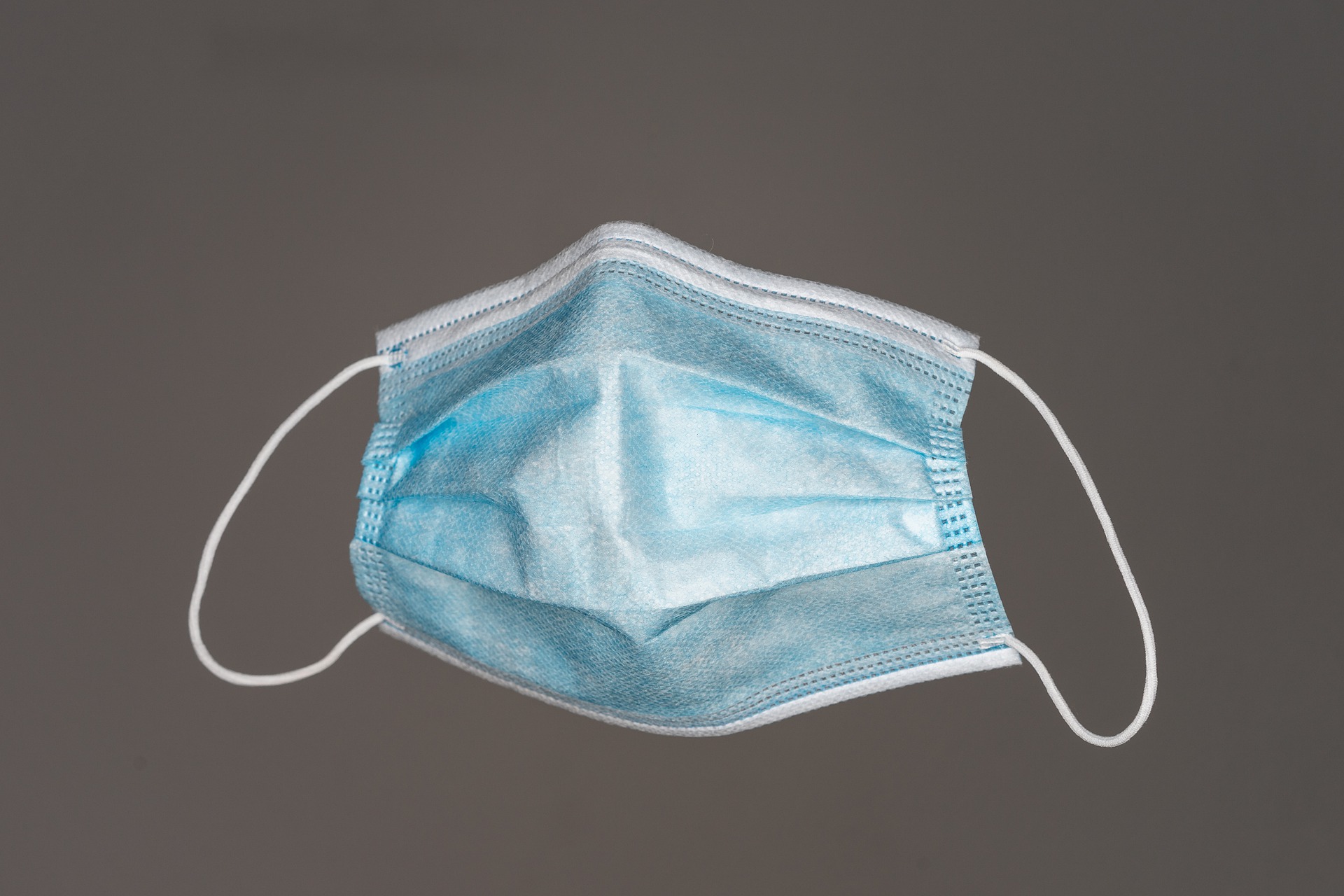
Instead of people clapping on balconies, I think Croatian healthcare workers would just prefer more general vigilance and personal responsibility – wear your mask, wash your hands regularly, no more parties in the basement. Clapping on balconies is a nice gesture, but ultimately it's an empty one.
How does it feel to know that there are some people out there, in every country, all around the world, who believe COVID is a hoax, or a plot, or not so serious, or that the vaccine is dangerous or something other than what it is?
Well, it's not always the content of the conspiracy theory that appeals to these people as much as it is their inability to accept facts – the truth – because they have little faith in the authorities that are telling them this. Here in Croatia, I think that distrust is quite high – a lot of people are disillusioned with the state and politics, because of corruption. Sometimes over 50% of the population choose not to vote. The dissemination of misinformation over social media doesn't help - if that's where people get their news from. If you look at that example from your own country, where strict measures about movement were put in place by your government, and immediately afterward, the Chief Advisor to the Prime Minister, was caught breaking them to travel across the country with his family to a second home in the countryside, going out on day trips. And he was defended by his colleagues after he was found out! When people see those kinds of things happening, the distrust between people and the authorities just grows.
All of the images in this article are used as illustrations only. None of the places or people depicted are in Croatia or Croatian, except for the first image, a panorama of Zagreb
Croatia is one of the Most Safe Countries in 2021 for Visitors
December 4, 2020 – Accepting all known knowledge of the Coronavirus risk and the announced vaccines, security and risk experts International SOS have published their latest, annual Travel Risk Map. It says Croatia is one of the most safe countries in 2021 for visitors
With the end of the life-halting Coronavirus in sight, thanks to several effective vaccines announced, which country would be best to visit next year? Well, Croatia is one of the most safe countries in 2021 for visitors.
It's been a long, difficult year for everyone. It's maybe hard to believe if you live in Croatia and haven't much travelled outside the country, but the residents of Croatia have had it no more difficult than anywhere else. With only around 4 million inhabitants, there's lots of space in Croatia to move around.
Take in comparison Britain's London. That one city (1,572 km²) alone has 9 million people. Croatia has 56,594 km² for less than half the number of people. But, this generous amount of space in which to move around is not the only reason Croatia is one of the most safe countries in 2021 for visitors.
On 2 December 2020, Total Croatia News published the annual report based on the Global Terrorism Index, identifying Croatia is one of the most safe countries in 2021 in regards to the absence of terrorist threat and effect. Now, according to the latest annual Travel Risk Map, it has been designated that Croatia is one of the most safe countries in 2021 for visitors.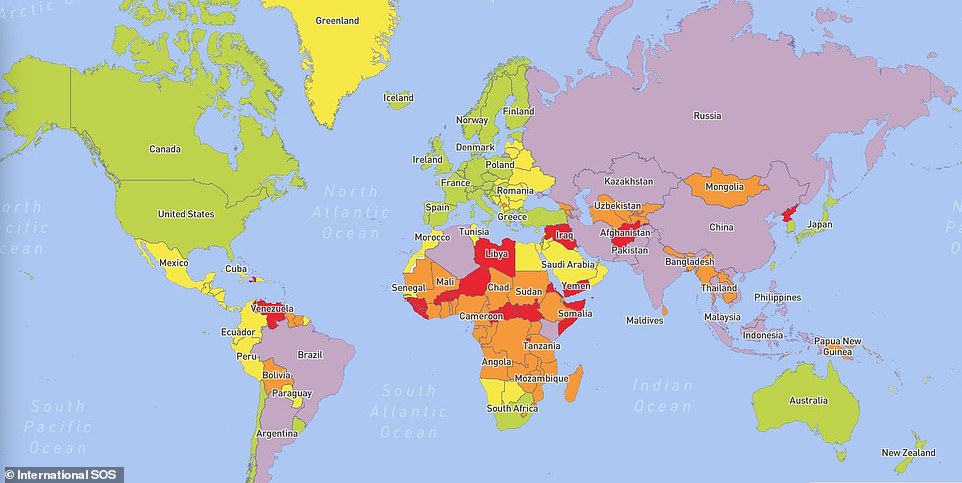 Security and risk experts International SOS's Travel Risk Map for 2021.
Security and risk experts International SOS's Travel Risk Map for 2021.
The map, created by security and risk experts International SOS , ranks the safety of countries across the globe taking into account medical, security and road risks. It assesses the risk of political violence, social unrest, and the threat of violent and petty crimes – and, most importantly this year, the impact of the pandemic.
For the first two categories, countries are given a rating out of five, while road safety is rated out of four based on the mortality rate per 100,000 people. The places with the highest risk level for security issues are mostly in Africa, with South Sudan, Mali, Yemen, Somalia and the Maiduguri region of Nigeria listed under the most dangerous, along with the Donetsk and Luhansk regions of the Ukraine.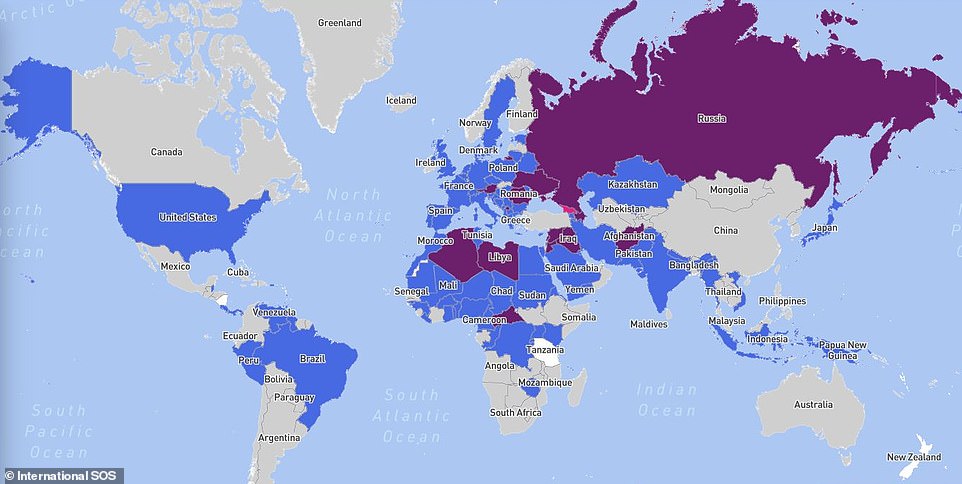 International SOS's map showing the countries with the most and least Covid-19 disruption. Very low-risk countries are marked in white, low risk in grey, medium in blue, high in purple and very high in pink.
International SOS's map showing the countries with the most and least Covid-19 disruption. Very low-risk countries are marked in white, low risk in grey, medium in blue, high in purple and very high in pink.
Very few countries rank above Croatia in the new safety map, New Zealand, Tanzania and Nicaragua among them, meaning Croatia is one of the most safe countries in 2021 for visitors.
For the residents of crowded cities elsewhere in Europe, Australia or the USA who have felt more than restricted in 2020, it might be worth remembering when planning next year's escape that Croatia is one of the most safe countries in 2021 for visitors.
Daily Warns of Shortage of Primary Care Physicians
ZAGREB, Aug 12, 2020 - An average primary care physician in Croatia is in their fifties, some of them are already opting for early retirement and around 160 who still work are older than 65 and can close their practices any time, the Wednesday issue of the Vecernji List daily says.
According to data from the Croatian Medical Chamber, there are 2,215 family doctors in Croatia, but that figure is disputable, says Vikica Krolo, who heads the KOHOM association of family doctors.
"Around 160 active doctors are older than 65, 200 primary care teams do not include a doctor, and around 660 doctors are about to retire," she says.
The situation with primary gynecology and pediatrics is also unfavourable, the average age of a gynecologist or pediatrician is 54 and 55 respectively, with 30% of active gynecologists being older than 60 and as many as 38% of primary care pediatricians being above that age.
The state has been trying to make up for the lack of young specialists with a specialisation plan that focuses on primary health care in the next five years, Krolo says, but warns that one should provide good work conditions, notably salaries, to attract young doctors to those branches of medicine.
She warns that family doctors opt for early retirement also because they lack motivation.
The administrative part of the job, phone calls, patients' emails, etc. are a daily routine that will become more demanding in the autumn, while patients will have more difficulty accessing primary health care, KOHOM has warned, noting that in addition to work related to the coronavirus epidemic, tourists and refugees, the health system will also have to deal with flu season in the autumn as well as with new prevention programmes.
Beros: HDZ Has Solution To Finance Sustainability Of Health System
ZAGREB, June 17, 2020 - Health Minister Vili Beros on Wednesday said that the Croatian Democratic Union (HDZ) election platform contained a solution that would enable the health system to become financially sustainable, noting that currently, it was neither sustainable nor good, particularly for patients.
"At the start of my term in office, I said that the health system was not in the best financial situation and that we have to define solutions that will enable it to be financially sustainable. The HDZ's election platform provides solutions that will regulate more adequately the health system's financial operations because now it is neither sustainable nor good, particularly for patients," Beros told reporters.
HDZ's platform oriented towards prevention, accessibility of primary health care
"Our platform is oriented towards preventative activities. Part of those activities is the need for self-sufficiency in the production of vaccines and blood plasma derivatives," underscored Beros.
He announced digital solutions that will improve accessibility to health protection.
"We have to work on improving access to primary health care... it is necessary to introduce an emergency helicopter medical service," he said and added that water ambulances for the islands and coastal communities would soon be introduced.
"We want to correct policies regarding the needs of the health system in the future so that we do not have a shortage of medical staff in certain areas of the country," he added.
Firefighters will receive instructions related to coronavirus during firefighting season
Commenting on the coronavirus pandemic, Beros said that the virus and the related measures would also have an impact on the fire season.
"The Croatian Institute for Public Health will issue firefighters with detailed instructions about what they should be wary of" during the firefighting season, Beros said.
From Lovran to Zagreb: How Do Croatia's Hospitals Stand Financially?
As Novac/Frenki Lausic writes on the 4th of May, 2019, across 59 hospitals in Croatia, a total of 41,692 workers are employed, out of a total of 65,000 employees in the health care system, and the share of health workers in the total number of hospitals ranges from 70.1 percent in the Lovran Orthopedic Clinic, to 81.2 percent at the Clinical Hospital Centre in Zagreb.
From this data, it could easily be concluded that the hospital in Lovran operates poorly, as it has a large number of administrative staff who aren't directly involved in the care of patients, while KBC Zagreb is best placed financially because it has the least employees in administration. The reality is exactly the opposite: Lovran is the best Croatian medical institution financially, making it one of the ten major state hospitals operating without any losses, while KBC Zagreb has the biggest losses, the most obligations, and the most outstanding unpaid obligations.
However, data on the positive financial performance of hospitals may be correlated with the fact that the largest share of beds (in total capacity) is boasted by the clinic in Lovran, 82.61 percent, while OB Varaždin, one of the general hospitals with the worst business indicators, has the largest number of beds for long-term and chronic treatment, as well as palliative care (511 beds, or 49.18 percent of the total bed capacity of the hospital) due to the merging of the Novi Marof Hospital for Chronic Disease and the Hospital for Lung Diseases, and TBC Klenovnik OB Varaždin.
Therefore, the status and causes of success and failure in Croatia's hospitals need not be judged at first impression because each hospital is a special case for itself and requires a deeper analysis. However, there are also common denominators when it comes to the ''bad'' side of the Croatian hospital system, ranging from poor financial results, some bad patient outcomes, long waiting lists, and some institutions with literally horrible sanitation facilities.
In response to a survey conducted by Maja Vehovec, Ivana Rašić Bakarić and Sunčana Slijepčević, researchers from the Economics Institute back in 2012, which included one director of the Clinical Hospital Centre, three directors of general hospitals and two directors of special hospitals and representatives of the association of employers in the health system, it can be seen that when finances are in question, "the root cause of the problem with not paying costs is seen by directors as a continuous imbalance between the revenue received and the expense accounted for."
The basic part of the hospital's income is, in fact, the income that the hospital receives from HZZO, which are presented as the so-called "limits", ie, the annual budget funding which was introduced back in 1997.
For this reason, the authors point out that the limits to be allocated to hospitals should be based on objective indicators such as the number and types of surgeries, the number and type of outpatient examinations and the like, ie, the costs of each activity. The second management model in this part, based on the payment of the services provided, began being implemented back in 2015, at the time when Croatia was ruled by an SDP government, but such a practice was later stopped by the HDZ government, which returned the "limits" method the following year.
The Croatian Government and the Ministry of Health have decided to ''repair'' the situation this year by increasing their contributions to the healthcare system from 15 to 16.5 percent.
Make sure to follow our dedicated lifestyle page for more information on Croatia's healthcare system, hospitals in Croatia, the quality of treatment in Croatia and much more.
Click here for the original article by Frenki Lausic for Novac/Jutarnji
Marić: ''Kujundžić is Great, But Croatian Health System is Unsustainable''
As Frenki Lausic/Novac writes on the 20th of April, 2019, the Croatian Government's convergence program for the next three-year period has identified the pension and health system as the two largest structural risks, both of which are associated with the country's worryingly negative demographic trends.
This government assessment came at a time when trade unions are busy organising a referendum on pension reforms, as well as during a somewhat shaky period in which Zdravko Marić, the Croatian finance minister, said that Milan Kujundžić, the minister of health, is an excellent minister but that the Croatian health system with over seven billion kuna's worth of debt is unsustainable in an interview for N1.
When it comes to Croatia's concerning demographic trends, the program states that, when comparing the European Union and the Republic of Croatia, in the period 2016-2070, the remaining life span after 65 years of age will be extended by 6.4 years in men and by 6.2 years in women in Croatia, whereas in the EU, it will be 5.3 years more for men and 5.1 years more for women.
It has been stated that the life expectancy at birth in 2016 was 81.1 years for women and 75 years for men, which is less than the average for the EU, where the expected life expectancy at birth for women was 83.7 years, for men 78.3 years. However, data for the Republic of Croatia showed that life expectancy up to 2070 will be 9.4 years more for men and 7.8 more for women, while for the EU, life expectancy is expected to grow to 7.8 years more for men and 6 more years for women.
In this context, the results of the long-term projections for the Republic of Croatia for the period 2016-2070 show that without the calculated effects of the reform which came into force at the beginning of this year, pension expenditures from the first pillar should be reduced from 10.6 percent of GDP, which is what it was back in 2016, to 6.8 percent of GDP to the year 2070.
At the same time, transfers from the national budget to cover the deficit would gradually fall from the current 4.8 percent to about 1.2 percent of GDP by the year 2070. Expenditures for pensions from the second pillar should gradually increase to 1.6 percent in 2070, which means that overall retirement expenditures from the first and second pillars in 2070 would amount to 8.4 percent of Croatia's GDP.
Thus, looking at the situation macroeconomically, the pension system would remain viable, but with inadequately small pensions. That is why the government states that measures from the latest pension reform will increase pension adequacy and, accordingly, retirement expenditures in the first pillar.
Make sure to follow our dedicated politics page for much more.
Click here for the original article by Frenko Lausic for Novac/Jutarnji
First Croatian Olive Oil for Children - Brachia Kids
There's no denying that Croatian olive oil is second to none, and we're not the only ones who think it. Croatian produce has won award after award and the long coastal traditions of olive growing, picking and harvesting in Croatia are worthy of just as much praise as the final results of that hard work are.
As Morski writes on thr 4th of April, 2019, the respected Brač brand of olive oil, Brachia, has launched Brachia Kids, the first Croatian olive oil made just for children of kindergarten and elementary school age, reports Journal.hr.
''Brachia Kids brings the fresh and intriguing taste of organic olive cultivation from ecological [olive] growing from the island of Brač. These flavours are ideal for children when it comes to falling in love with the taste of olive oil. This new product is intended for parents who understand the healing properties and the great nutritional value(s) of olive oil, and who want to introduce it to their children's diet,'' said Leopold Botteri, the co-manager of the Brachia cooperative.
Part of the main role in popularising the consumption of olive oil for children will also be played by its attractive packaging, which has been made by Izvorka Jurić and Jurica Kos.
''We've designed the packaging so that the product is attractive to children, fun to use, and also educational, in order to develop their awareness of the importance of the regular use of olive oil. The body of a glass vial (0.25 dcl) has been partially placed in a box that, together with the black tip of the bottle, forms a crayon, and within which six crayons are actually housed. Following the dissolution of the box, there is a fun colouring book with illustrations of olive trees and leaves and various tasks for children to complete. Olive oil nourishes the body, and the puzzle and colouring on the packaging, acts as food for the brain. Together, they make a complete product for the healthy development of children,'' explained packaging designer Izvorka Jurić.
In addition to the premium olive oil of Brachia Maslina and the latest Brachia Kids product - Izvorka Jurić has designed products for the lines of Brachia sort oils, ecoBrachia and Brachia & Friends. All of these products, including Brachia Kids' olive oil for children, are now available for purchase in UJE stores across the Republic of Croatia.
Make sure to follow our dedicated Made in Croatia page for much more.
Ticks in Croatia Wake Up Much Earlier this Year!
If you plan to do any outdoor activities in Croatia this spring, you should be aware of one thing: ticks in Croatia have "woken up" much earlier in the year than it's customary, so even these days, in mid-March, you should be prepared to fight them while outdoors.
The winter was extremely mild (some would say that the winter in Croatia this year was, in fact, non-existent, we just went from prolonged autumn to early spring), and those warm temperatures have increased the activities of the nasty ticks out there. That led to the first case of Lyme disease to be recorded in Croatia already, happening in Primorsko-goranska county. Lyme disease is a bacterial infection, transmitted by the bite of an infected tick, and can usually be treated by a course of antibiotics. It is, however, important to recognize the symptoms of the disease as soon as possible, so it's important to be aware of the unusual activity of ticks in Croatia this early in the season.
Lyme disease is not the only tick-borne disease you should be wary of, there are several other diseases transmitted to humans by ticks, but also every pet (especially dog) owner knows that their dogs should also be protected from ticks, as they can also get Lyme disease. So, if you plan to spend time outdoors in Croatia this spring, you should wear appropriate clothing (long sleeves and pant legs), shows that don't leave a lot of skin unprotected, and of course, repellents for your pets. As soon as possible, as you're out of the literal and metaphorical woods, get out of the clothes you wore while outdoors, take a shower and do a check to see if any ticks managed to latch on. Washing the clothes ASAP will take care of any ticks that might be hidden somewhere in there, if possible. If you find a tick somewhere on you, remove it with tweezers and put some antiseptic on the bite. Make sure you keep an eye on the bite location for a few days and see a doctor if anything unusual appears on the site.
5 Things You Should Know Before You Get Sick in Croatia
April 14, 2018 - Croatian doctors are quite caring, quite professional and excellent at their jobs... but we all know our health system comes with a couple of quirks. Some well-meaning advice brought to you by Josip Šore, a young doctor in making
Enjoy the Croatian Lifestyle, it May Save Your Life
Croatia offers more than just the sun and the sea, spending a week here and adapting to the lifestyle may just save your life.


